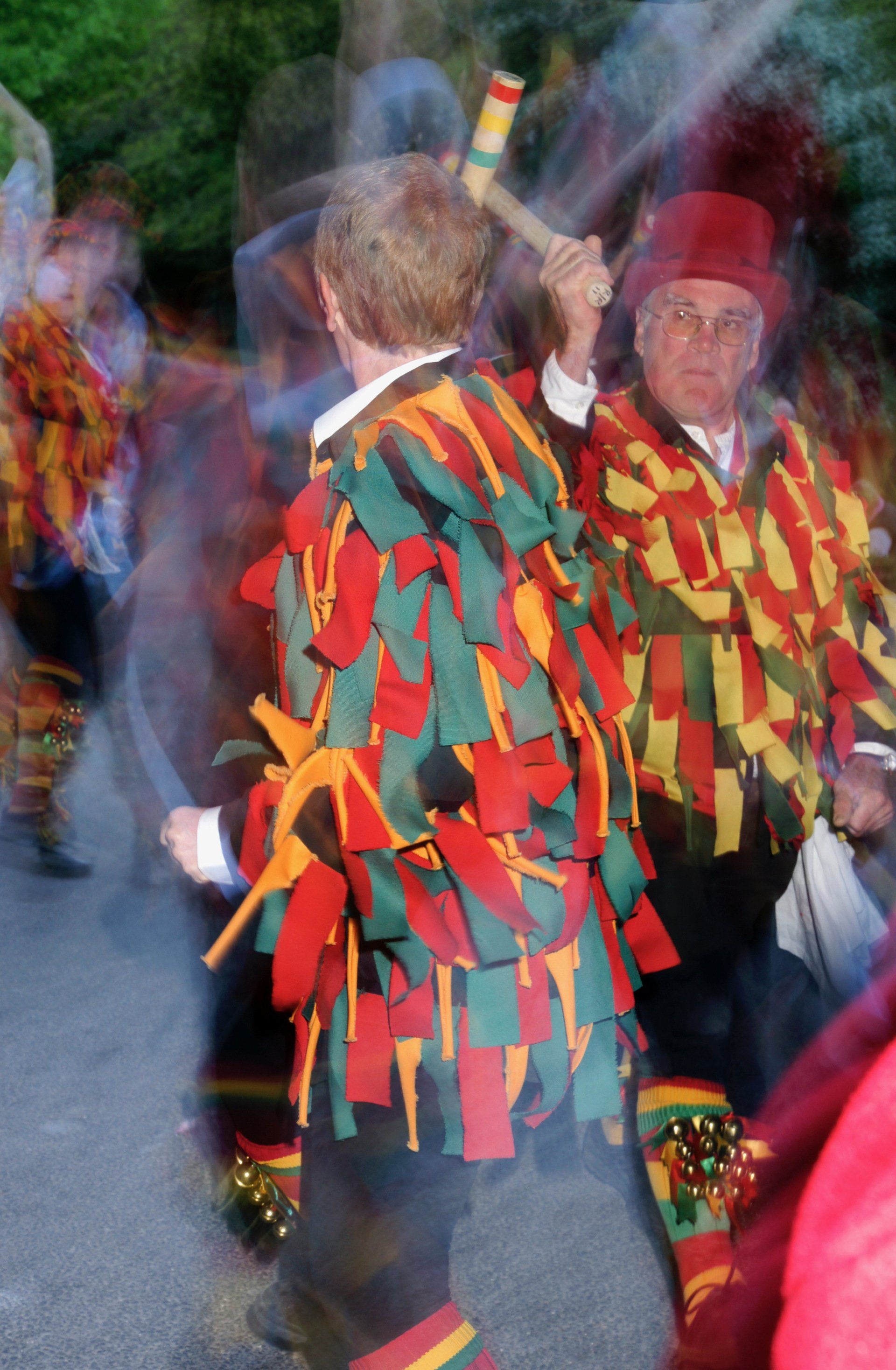Traditional History
The earliest origins of Morris dancing are lost in the mists of time, though it is thought that it came from continental Europe. We do have records from the 15th century which tell us that it was an entertainment at court. From that period there are illustrations of Morris with professional dancers, grotesques and acrobats.
By the mid 17th century the peasantry were celebrating high days and holidays with Morris dancing, and this was a feature of country life until the huge social changes consequent upon the Industrial Revolution. A very few villages (notably in the Cotswolds) continued dancing and a few locals had distant memories of it, sufficient to inspire the late 19th century collectors of folk music who in turn learnt the dances and passed them on to their contemporaries and successors in the early 20th century.
Among the folklorists who recorded and revived the tradition were Cecil Sharp, Maud Karpeles and Mary Neal. The last of these, Mary Neal, spent some time in the Dorking area and brought her Esperance Club and Guild of Morris Dancers on holiday to the Sundial House in South Holmwood.
The dancers usually performed wherever they visited and also taught the dances to ensure their survival and spread, though we are still searching for some record of this happening in Dorking.
Modern History
In the early decades of the 20th century the first of the revival Morris sides were formed, and then in the 1950s and subsequent decades many more sprang up – men’s, women’s and mixed sides. There was huge enthusiasm for the dancing.
Now we need to “fast forward” to 1993 when four people who had all been involved in Morris dance and folk music for some years felt it was time to leave their respective Morris sides and form a new, vibrant mixed side, Rampant Rooster Morris. The founding members of the new side were Martina Preece, the first squire, Tim Curtin, the first foreman, Ray Henderson, the first bagman, and Neil McRitchie the lead musician. The side attracted considerable support and was able to hold its first performance at the Duke’s Head in Brockham at Christmas in that year. There followed many more performances over the decades in our home base, Dorking, throughout Surrey and Sussex, in London, and in France, Germany, Ireland, Italy, Czech Republic and the Scilly Isles!
Rampant Roosters were the
first Morris side to be based in Dorking
and adopted the cockerel of the famous Dorking breed as their emblem. The Mole Valley coat of arms from 1975 shows cockerels rampant in bright colours - (from Heraldry-wiki.com). The side adopted the vibrant colours of red, green and gold for their costume and adapted the cockerel image for their emblem.
Roosters have met up weekly on Zoom during the COVID restrictions and we are delighted to launch our summer dance season for the Local and Community History Month. In addition to the dancing there are some Rooster-inspired activities (Download a colouring Photo for Children) and a small exhibition.
You can see
our programme here and would ask you to check this before you set off for an event. There will be additions, changes and possibly cancellations, as we are still in rather uncertain times.
We would really love to have some new people joining us, so do come along to our events and “have a go”, don't be afraid to
contact us.




